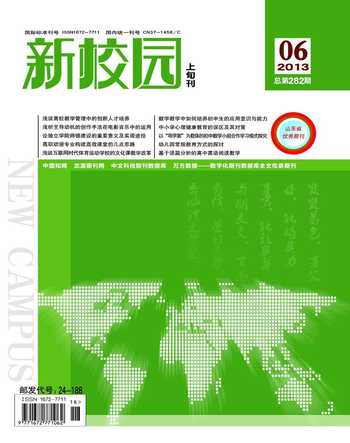A Night the Earth Didn’t Sleep 教学设计
朱巧珍
一、教材分析
1.教材内容分析
在此课之前的第一课时中,教师已与学生一起讨论了一些关于自然灾害的话题,如洪水、台风、海啸、飓风、火山爆发等,并已布置学生查阅地震方面的资料,学生对该话题有良好的背景知识。
这是一篇新闻报道类的记叙文,用第三人称的形式講述了1976年唐山大地震,介绍了唐山大地震的震前预兆、地震造成的损失和震后的救灾情况。本文以事情发生的先后顺序为线索,运用大量的细节信息,生动地再现了地震发生时的景象,表达了作者对灾区人民的同情心。
2.教学目标
根据英语新课程标准关于总目标的具体描述,结合高一学生实际和教材内容,笔者将教学目标分为知识目标、能力目标、情感目标三个方面。
(1)知识目标。让学生了解唐山大地震的有关情况:地震前所发生的一些异常现象,震后所带来的毁灭性破坏以及随之而来的全国军民大援救等;学习并掌握本课的词语、表达方式、语法结构;学习有关数量的不同表达,了解反复、夸张、比喻等修辞手法的作用。
(2)能力目标。能运用所学语言知识描述地震方面的知识;进一步使用恰当的阅读方法与技能,提高略读、细读、归纳和总结内容的能力,提高学生的阅读技能和获取信息、处理信息的能力;了解新闻报道的写作特点。
(3)情感目标。感受和学习救灾人员无私无畏的精神;关注自然灾害,形成对科技在震前预测和救灾工作中的重要性的认识,并学会在地震发生时的自救和救助他人。
3.重点难点
(1)培养学生的阅读技巧和能力。
(2)运用所学单词和短语来描述地震,理解课文中较长的句子并学会划分句子成分,体会比喻、夸张和反复等的写作手法。
二、学情分析
经过高一前面三个单元的学习,学生已拥有小组讨论的经验,也已经具备一定的语言知识和语言技能以及独立思考的能力,掌握了寻读、细读等阅读策略,能较好地理解大意、获取信息。
三、教学设计思路
本节课是阅读课,旨在培养学生的阅读理解能力,引导学生运用本课所学的语言知识点,让学生加深对文章主题的理解,同时对学生进行地震时如何进行自救及救助他人的教育。
为了激发学生的阅读兴趣,首先使用图片引出文章的主题;通过整体阅读,寻找段落主旨整体感知文章;再分部分阅读理解及小组讨论,培养学生获取信息的能力和归纳总结能力;最后引导学生了解新闻报道的写作特点。
四、教学过程
Step1:Lead—in
(1)Ask the students to look at the photos of Tangshan and San Francisco to describe what they see in the two photos.
(2)Imagine there has been a big earthquake in these two cities, what might happen to all the things in the photos?
然后教师用多媒体播放一些地震的画面。
设计说明:用图片和多媒体导入内容,形象、直观、生动,能吸引学生的注意力,激发他们的学习兴趣。同时,可以让学生初步了解地震的有关知识,为后面的阅读活动做铺垫。
Step2:Reading
(1)Skim the reading passage and then answer the following question:
Q:What does the passage mainly talk about?
设计说明:整体感知文章,了解文章大意。
(2)Fill in the table after reading.
■
然后教师提问:How do you know that the earthquake lasted 15 seconds?
引导学生找出原文中的句子:In fifteen terrible seconds a large city lay in ruins.
设计说明:引导学生快速阅读文章,查找所需的信息,初步了解文章内容,并明确这次地震的时间、地点和持续的时间。
(3)Divide the whole passage into three parts and summarize the main idea of each part.
Part1(paragraph1 before the earthquake):Strange things were happening but on one take any notice of them.
Part2(paragraph2~3 during the earthquake):The earthquake destroyed the city of Tangshan and shocked the people very much.
Part3(paragraph4 after the earthquake): The army came to rescue the survivors, bringing hope for a new life.
然后教师提问:Can you use one word to summarize the main idea of each part?(signs, ruins, rescue)
设计说明:通过划分段落和概况段落大意,让学生从整体上理清文章的脉络,培养了学生的概况能力和快速获取信息的能力,也学生为下一步获取细节信息的活动打好了基础。
(4)Get the students to scan the passage and then comprehend it paragraph by paragraph.
Part1:Before the earthquake
Q1:What natural signs of a coming earthquake were there? (同时呈现图片)
Q2:Why does the writer repeat“rose and fell” in the passage? What rhetorical device(修辞手法)does the writer use here?
设计说明:问题1通过让学生寻找地震发生前的迹象这样一个问题,既训练学生利用阅读技能获取信息和处理信息的能力,又让学生了解了地震的基本知识。问题2加深了学生对文章中反复的修辞手法的理解,指导学生明白作者使用这一修辞手法的目的。
Part2:During the earthquake
Q1:What happened during the earthquake?
Get the students to find some details of this part.
Details:
①At 3:42 am, the greatest earthquake of the 20th century began.
②Steam burst from holes in the ground.
③Hard hills of the rock became rivers of dirt.
④Bricks covered the ground like red autumn leaves.
⑤Two dams and most of the bridges fell.
⑥The railway tracks were now useless pieces of steel.
⑦Sand now filled the wells instead of water.
⑧Water, food, and electricity were hard to get.
接着教师提问:
Q2:Which sentence can best describe the serious damage of the earthquake?
引导学生找出原文中的句子:It seemed as if the world was at the end.
Q3:What rhetorical device does the writer use in the sentence?
Q4:What other rhetorical devices does the writer use?
然后引导学生找出如下句子:
A night the earth didnt sleep.
For three days the water in the well rose and fell, rose and fell.
Bricks covered the ground like red autumn leaves.
Slowly, the city began to breathe again.
然后,让学生填写下列数据:
① 1/3 of the nation felt the earthquake.
②A huge crack that was 8 kilometres long and 30 metres wide cut across houses.
③In 15 terrible seconds a large city lay in ruins.
④ 2/3 of the people died or were injured during the earthquake.
⑤The number of people who were killed or injured reached more than 400,000.
⑥All of the citys hospitals, 75% of its factories and buildings and 90% of its homes were gone.
接著教师启发学生思考:Why does the writer give us so many numbers to describe the damage that the earthquake caused?
设计说明:教师通过提问的方式引导学生关注修辞手法的运用,并用数据准确地反映地震受损程度,培养学生获取细节信息的能力和概括能力。同时,指导学生欣赏文章中的优美语句,感受语言的魅力。
Part3:After the earthquake
Q1:How were the people helped by the army?
Q2:Could anything more to be done to help the people in the earthquake? (Group work)
然后,教师引导学生思考以下句子的深刻含义:Slowly, the city began to breathe again.
设计说明:以上的问题设置基于文章内容,但又不局限于文章内容,培养了学生的发散思维能力。
Step3:Post-reading
Show the questions and have a discussion.
Q1:From whose point of view are events described? How do you know?
Q2:What is the mood of this passage? How is it created?
Q3:Why do you think the writer is expressing his feelings about the earthquake rather than simply reporting what happened?
设计说明:了解新闻写作特点,感受和学习救灾人员的可贵精神。
Step4:Homework
(1)Recite the sentences using rhetorical devices.
(2)Read the text again and again and write a summary of the text.
五、教学反思
1.本节课的成功之处
(1)本节课的设计建立在教师对教材的认识、理解、解读和加工的过程上,体现了教学的层次性和教学任务设计的有效性。
(2)教学设计思路清晰。整个教学活动以阅读为平台分为三大板块:读前活动、阅读活动和读后活动。读前活动的作用在于输入语言及话题,激活学生学习情感,为阅读活动打好背景、知识和心理基础。阅读活动先是让学生略读,了解文章主要内容,接着以时间为线索让学生用一个字概括段意,帮助学生理清了文章结构,最后要求学生对文章每一部分进行细读。读后活动提出深层次的问题,加深学生对文章的进一步理解。
(3)問题设计有效地引发学生思考。通过对文章的解读,在细读环节,教师设置环环相扣的问题,把学生的思维逐步引向深入,启发学生思考、讨论,激发了学生的兴趣,提高了学生的阅读能力,从而突破了教学的重点和难点,提高了教学效率。
2.本节课还需改正之处
(1)由于引入和阅读时间超出预设范围,导致时间分配上前松后紧,使得后面学生讨论问题的时间不够充裕。如果能够给予学生更多的时间思考,学生的讨论会更好地展开。
(2)在最后的讨论中,阅读的深入让学生对文章有了更深入的理解。但由于时间关系,只让两位学生发表了自己的观点,未能让更多学生畅谈。
参考文献:
[1]教育部.普通高中英语课程标准[M].北京:人民教育出版社,2003.
[2]席玉虎.名师说课(新高一上)[M].北京:中国科学技术出版社,2006.
[3]任志鸿.高中同步导学大课堂[M].北京:华文出版社,2006.

